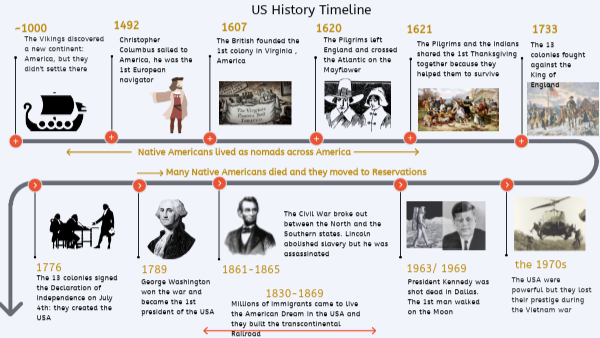Founder Of Gmail

Gmail: Revolutionizing Email Communication

In the vast landscape of digital communication, Gmail stands as a pioneer, reshaping the way we interact and connect. This article delves into the origins of Gmail, exploring the visionary mind behind its creation and the impact it has had on the world of email. From its humble beginnings to its global dominance, Gmail's story is one of innovation, convenience, and a relentless pursuit of simplifying digital correspondence.
The Visionary: Larry Page, Founder of Gmail

Larry Page, a co-founder of the tech giant Google, is the driving force behind Gmail’s conception and development. With a background in computer science and a passion for problem-solving, Page envisioned a revolutionary email platform that would transcend the ordinary. Gmail’s birth was not just about creating another email service; it was about revolutionizing the entire email experience.
Born in Michigan, United States, on March 26, 1973, Larry Page's journey into the world of technology began early. His curiosity and ingenuity were nurtured at the University of Michigan, where he earned a Bachelor of Science degree in Computer Engineering. However, it was at Stanford University that his path intersected with Sergey Brin, and together, they laid the foundation for what would become Google.
Page's vision for Gmail was rooted in his belief that email should be more than just a means of sending messages. He envisioned a platform that would be intuitive, efficient, and accessible, with features that would enhance productivity and streamline communication. Gmail's launch in 2004 marked a significant milestone in the history of digital communication, offering users a fresh and innovative approach to managing their emails.
The Early Days: Gmail’s Genesis
The idea for Gmail germinated within the innovative minds at Google. The search engine giant recognized the potential for disruption in the email space, where users were often frustrated by limited storage, complex interfaces, and frequent spam. With a mission to organize the world’s information and make it universally accessible, Google set out to create an email service that would redefine the norms.
Gmail's development began in secrecy, with a small team of engineers working tirelessly to bring Page's vision to life. The focus was on creating an email platform that offered ample storage, a clean and intuitive interface, and powerful search capabilities. Additionally, the team aimed to integrate innovative features like thread-based conversations and a spam-filtering system that would set new standards in the industry.
One of the key challenges the team faced was securing the necessary server space to accommodate the vast amounts of data that an email service would generate. Google's innovative approach to this problem involved using cheap, off-the-shelf hardware and developing a custom software solution to manage the infrastructure. This decision not only saved costs but also laid the foundation for Gmail's scalability and resilience.
| Feature | Description |
|---|---|
| 1TB Storage | Gmail offered a whopping 1TB of storage from its inception, a game-changer at the time. |
| Threaded Conversations | This feature grouped emails into conversations, making it easier to follow discussions. |
| Intuitive Interface | A clean and user-friendly interface made Gmail accessible and easy to navigate. |
| Powerful Search | Gmail's search function allowed users to find emails quickly, even within large volumes. |

On April 1, 2004, Google announced the launch of Gmail to the public. However, this was not a typical launch; Gmail was initially available only by invitation, creating a sense of exclusivity and curiosity. This strategic move allowed Google to control the rollout and gather valuable feedback from early adopters, ensuring a smooth and successful launch.
The Impact: Revolutionizing Email
Gmail’s impact on the email landscape was immediate and profound. With its innovative features and user-centric design, it challenged the status quo and set new standards for email services. The 1TB of storage it offered was a game-changer, liberating users from the constant worry of running out of space and allowing them to archive emails indefinitely.
The introduction of threaded conversations revolutionized how users managed email correspondence. Instead of a linear list of messages, Gmail grouped related emails into conversations, making it easier to follow discussions and keep track of responses. This feature, now an industry standard, significantly enhanced the user experience and improved productivity.
Gmail's intuitive interface and powerful search capabilities further solidified its position as a leader in the email space. The clean and simple design made it accessible to users of all technical abilities, while the advanced search function allowed users to quickly find specific emails within their vast inboxes. This combination of ease of use and powerful functionality attracted users in droves, solidifying Gmail's position as a top choice for email services.
Global Dominance: Gmail’s Reach and Influence
Gmail’s impact extended far beyond the tech-savvy early adopters. Its intuitive design, robust features, and seamless integration with other Google services quickly made it a favorite among a diverse range of users, from students and professionals to small businesses and large enterprises.
One of Gmail's key strengths was its ability to adapt to the needs of different user segments. For students and professionals, Gmail's powerful organization tools, integrated calendar, and seamless collaboration features made it an invaluable asset for managing busy schedules and collaborating on projects. Its integration with Google Drive and Docs further enhanced its appeal, offering users a comprehensive suite of tools for managing their digital lives.
Small businesses, in particular, found Gmail to be a game-changer. The service's robust features, including email threading, powerful search, and customizable labels, allowed small business owners to efficiently manage their communication, collaborate with their teams, and keep track of important correspondence. Additionally, Gmail's low cost and ease of setup made it an attractive alternative to traditional, more expensive email services.
For large enterprises, Gmail's scalability and security features were a major draw. The service's ability to handle vast amounts of data and its robust security protocols, including two-factor authentication and data encryption, made it a reliable choice for businesses with high email volume and sensitive information. Additionally, Gmail's integration with other Google Workspace applications, such as Google Meet and Google Sheets, provided enterprises with a comprehensive suite of tools to manage their digital operations.
| User Segment | Gmail's Impact |
|---|---|
| Students & Professionals | Gmail's organization tools, integrated calendar, and collaboration features make it an essential tool for managing busy schedules and projects. |
| Small Businesses | Robust features, low cost, and ease of setup make Gmail an attractive alternative to traditional email services. |
| Large Enterprises | Scalability, security features, and integration with Google Workspace applications make Gmail a reliable choice for businesses with high email volume and sensitive information. |
As Gmail's popularity grew, it became more than just an email service; it became a cultural phenomenon. Its catchy name, intuitive design, and innovative features captured the imagination of users worldwide. The service's ability to seamlessly integrate with other Google applications further enhanced its appeal, offering users a comprehensive suite of tools to manage their digital lives.
The Future: Gmail’s Ongoing Evolution
Larry Page’s vision for Gmail continues to shape its evolution. The service remains at the forefront of innovation, consistently introducing new features and enhancements to meet the evolving needs of its users. From the introduction of Smart Compose, which uses AI to suggest words and phrases as you type, to the integration of Google Chat and Meet for seamless collaboration, Gmail continues to push the boundaries of what an email service can be.
As technology advances and user expectations evolve, Gmail remains committed to its core principles of simplicity, efficiency, and accessibility. The service's focus on security and privacy has also become a key differentiator, with ongoing enhancements to data encryption, two-factor authentication, and spam filtering ensuring that user data remains safe and secure.
Looking ahead, Gmail's future is bright. The service's global reach and reputation for innovation position it well to continue leading the email space. With a committed user base and a dedicated team of engineers and developers, Gmail is poised to continue its legacy as a pioneer in digital communication, offering users a seamless, secure, and intuitive email experience.
How did Larry Page’s vision for Gmail influence its design and features?
+Larry Page’s vision for Gmail centered on creating an email service that was intuitive, efficient, and accessible. This vision influenced the design and features of Gmail, with a focus on ample storage, a clean interface, and powerful search capabilities. The introduction of innovative features like thread-based conversations and robust spam filtering further enhanced the user experience.
What was the impact of Gmail’s initial invitation-only launch?
+The invitation-only launch of Gmail created a sense of exclusivity and curiosity, allowing Google to control the rollout and gather valuable feedback from early adopters. This strategic move ensured a smooth launch and helped build a strong foundation for Gmail’s success, setting the stage for its eventual global dominance.
How has Gmail adapted to meet the needs of different user segments?
+Gmail has adapted to meet the needs of various user segments by offering robust features and seamless integration with other Google services. For students and professionals, Gmail’s organization tools, integrated calendar, and collaboration features are invaluable. For small businesses, its low cost and ease of setup are attractive. Large enterprises appreciate its scalability, security features, and integration with Google Workspace applications.
What sets Gmail apart from other email services in terms of innovation and user experience?
+Gmail stands out for its innovative features, such as thread-based conversations, powerful search capabilities, and seamless integration with other Google applications. Its focus on simplicity, efficiency, and accessibility has made it a favorite among users of all technical abilities. Additionally, Gmail’s commitment to security and privacy, with ongoing enhancements to data encryption and spam filtering, further sets it apart from competitors.



